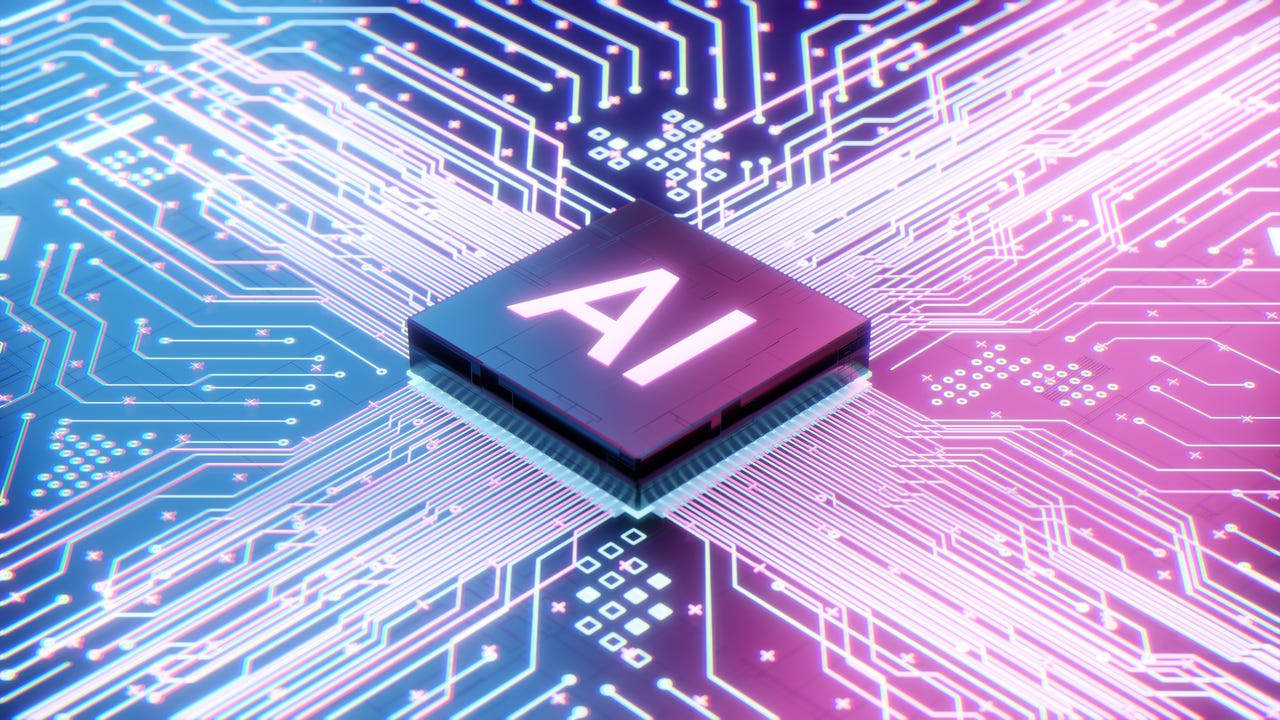































 Black_Kira/Getty Images
Black_Kira/Getty Images The progress of artificial intelligence, as well as career opportunities, appears to be a mixed bag. Demand for AI-related professional skills is increasing across virtually every industry sector -- but is still a relatively small piece of the overall hiring picture. While many interesting use cases are moving forward at an impressive pace, the rate of year-over-year improvements is slowing.
Those are some of the many takeaways from the latest AI Index, published by the Stanford Institute for Human-Centered Artificial Intelligence (HAI), which released data showing the number of AI-related job postings increased on average from 1.7% in 2021 to 1.9% in 2022.
Also: How an AI tool could crack your password in seconds
While this is still a small fraction of job postings, the possibilities and use cases that will require more talented professionals keep accelerating. In addition, while AI continued to post state-of-the-art results within implementations, year-over-year improvement on many benchmarks "continues to be marginal," the report's authors add.
The information presented in the report covers developments through the year 2022, so the impact of generative AI models, especially ChatGPT released in November, had not yet been felt. "2022 saw the release of text-to-image models like DALL-E 2 and Stable Diffusion, text-to-video systems like [Meta's] Make-A-Video, and chatbots like ChatGPT," the study's authors state. "Still, these systems can be prone to hallucination, confidently outputting incoherent or untrue responses, making it hard to rely on them for critical applications." In addition, language models, they note, "continued to improve their generative capabilities, but new research suggests that they still struggle with complex planning tasks."
Also: Just how big is this new generative AI? Think internet-level disruption
The impact of AI is being felt and documented in many other ways, however. The AI capabilities most likely to have been embedded in businesses include robotic process automation (39%), computer vision (34%), natural language text understanding (33%), and virtual agents (33%). The most commonly adopted AI use case in 2022 was service operations optimization (24%), followed by the creation of new AI-based products (20%), customer segmentation (19%), customer service analytics (19%), and new AI-based enhancement of products (19%).
There has also been progress in widening the capabilities of AI systems, from narrow tasks to broader tasks. "Traditionally, AI has been strong in narrow tasks, but it has been unable to easily generalize across multiple domains," the report's authors state. "For instance, many image classifiers are adept at classifying images but are incapable of understanding written text. In 2022, several models were introduced, for example, BEiT-3 from Microsoft and PaLI from Google, that posted state-of-the-art results across a variety of both vision and language benchmarks."
Also: How to write better ChatGPT prompts (and this applies to most other text-based AIs, too)
Open-source AI software projects also move forward -- with more than a third of a million now documented. Since 2011, the total number of AI-related GitHub projects has steadily increased, growing from 1,536 in 2011 to 347,934 in 2022, the report states. The largest portion of GitHub AI projects in 2022 was contributed by software developers in India (24%), followed by the European Union and the United Kingdom (17%), and then the United States (14%). The share of US-originated GitHub AI projects has been declining steadily since 2016, the study's authors note.
In addition, AI tools such as GitHub's Copilot, a text-to-code AI system, "are tangibly helping workers," the report's authors relate, citing the results of a GitHub survey that shows 88% of surveyed respondents feel more productive when using the system, with 74% feeling they are able to focus on more satisfying work.
Also: ChatGPT: Who's using the AI tool and why?
Image recognition is slowly approaching the 100% rate, the study also relates. "Currently, many facial recognition systems are able to successfully identify close to 100% of faces, even on challenging datasets." In addition, "the best image classification system on ImageNet has a top-1 accuracy rate of 91% -- but has been improving at a marginal rate of 0.1 percentage points a year."
 Tags quentes :
Inteligência artificial
Inovação
Tags quentes :
Inteligência artificial
Inovação